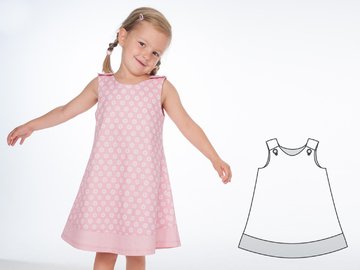In my previous blog article, I showed you how to draw your own individual Log Cabin Block. By choosing only one color for each complete round, we created the Log Cabin Block variant, which is called "Amish Square Block", among other things.
.jpg)
Now I will show you the classic, original form of the Log Cabin Block. The versatility of this block is demonstrated, among other things, by the many possible combinations of the individual blocks in the quilt.
The structure of the Log Cabin Block
The construction of the block is exactly the same as the Amish Square version. It gets tricky when we arrange the colors in the block.
Personally, I can't do this and other concentration activities in the evening when I'm already a bit tired. Too often I have seen the mistakes the next day and then had to use the seam ripper or redo the drawing...😌
For me, this original version of the Log Cabin Block is easiest to create if I draw the block first and color it last.
Maybe you like this order best too?
Feel free to try it out with me!
How to draw the original Log Cabin Block
The square is in the middle of the Log Cabin Block. In my design, the square has a size of one centimeter.
.jpg)
We draw the stripes around this square. My stripes also have a height of one centimeter. However, you can change all the sizes to suit your taste.
The length of the stripes depends on the length of the available options. Sounds strange, but that's how it is.
This means that if you draw the first stripe on the square, the stripe can only have a length of one centimeter, as the square only has a length of one centimeter.
I draw the stripes in a clockwise direction. For me, this means that I draw the first stripe above the square.
.jpg)
The order of the next strips is then always to the right, below and to the left of the square.
The second strip to the right of the square again runs the entire length of the existing pattern.
.jpg)
Now I add the strips below and to the left of the square at the right length.
.jpg)
.jpg)
The first round of the Log Cabin Block is finished.
So that I don't mix up the order of the strips when sewing later, I write the order of the pieces of fabric to be sewn on the drawing.
I draw the second round and all subsequent rounds in the same way.
.jpg)
.jpg)
.jpg)
You can draw as many rounds as you like for your Log Cabin Block.
Now that the blank of our Log Cabin Block has been drawn, let's move on to the exciting colorful part. 🙂
In the classic Log Cabin Block, two sides of the square are painted in the same color. Often two sides have a lighter color and the other two sides have a darker color. If you imagine the Log Cabin, there are two sides that are more exposed to the light, i.e. the sun, and the other two sides are the sides of the house that are more shaded.
When choosing the fabrics, there is the option of using the same color or the same fabric on two sides.
.jpg)
Alternatively, these two sides can also have different shades of an orange color, for example. These shades then change in the respective rounds. You can see what I mean in my example.
.jpg)
The heart, i.e. the center of the block, is traditionally red, although there are also yellow centers, but I'll tell you more about that in a moment.
History of the Log Cabin Block
As already briefly mentioned, the Log Cabin Block has a long tradition. I find the history of a log very interesting and I am always happy when I find information about the historical background.
As I have already mentioned, the red square in the middle of the log symbolizes the fireplace of the log cabin or the heat source of the house.
There is a second variant in which a yellow square symbolizes a window of the house or the light that shines through a window of the house. I also really like this alternative.
After all, both describe wonderfully the importance of warmth and light in the living space of emigrants who wanted to find a new home in the "New World", i.e. in America. Last but not least, the dwellings of the time were initially really log cabins or wooden houses.
Another very interesting aspect is that this log did not originate in America (as I always thought...), but was brought by the European immigrants.
There are even many statements that this log cabin pattern was already known to the ancient Egyptians and was found in burial chambers. Unfortunately, I have not found a photo showing such an Egyptian find. I therefore hope that this traditional information is actually true.
Regardless of who created the pattern and how old it actually is, it has been handed down for centuries and is very popular today with both traditional and modern fabrics and colors.
Back to the present. You now know how to draw the original Log Cabin Block and what options you have for coloring it. Now it's up to you and your creativity to put your new knowledge into practice.
Simply try out a few color combinations. You could also try out different fabrics to see how they work together.
You could then sew two or three test blocks with the fabrics you have chosen. When you put these blocks together, you can often see whether you really like the design.
.jpg)
.jpg)
.jpg)
.jpg)
You can already see from these two blocks what different effect the respective arrangement of the blocks has.
I am now continuing to sew my Log Cabin Blocks. Perhaps I have motivated you to give it a try? Then I'm really looking forward to seeing your photos of your drawings or the sewn blocks.
Happy quilting!
Chris





























































































































































